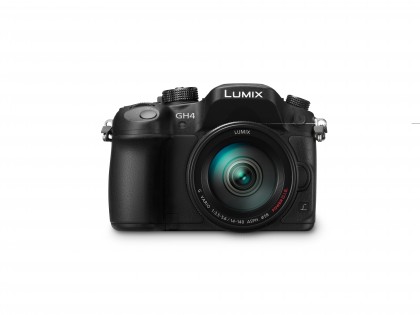Why you can trust TechRadar
Although Panasonic may want to promote the GH4 as a stills camera, the fact that it is the first compact system camera to record 4K video means it has grabbed the attention of keen videographers.
The company has also boosted the camera's video capability with focus peaking and zebras – both of which are of use to stills photographers, but which have their origins in video. Plus there's the Interface Unit to allow serious and professional video shooters to build a professional rig around the camera for a fraction of the usual cost.
The fact that the company has stuck with the same pixel count as the GH3 on its sensor means that it doesn't make really significant strides with detail resolution, but the images do look a little nicer straight from the camera and noise is better controlled.
It's interesting to note that while the Nikon D800 was greeted with great enthusiasm, not least because of its 36Mp sensor, and there are numerous cameras available with 18-24Mp sensors, 16Mp sensors are still widely accepted. The Nikon Df is a particular case in point. However, the Df is a full-frame sensor (36x23.9mm) that allows the pixels to be large (comparatively), whereas the Four Thirds sensor in the GH4 is smaller than APS-C format at 17.3x13mm, so 16Mp is pushing its capability further.
There are significant benefits to having a smaller sensor, the smaller size of the camera and lenses being the most obvious. There's also the opportunity to have better image quality across the whole frame because (with the right design) the sensor can cover the lens's image circle more easily. However, a small sensor limits the potential size of the pixels and this gives Panasonic a challenge when it comes to controlling noise.

The GH4 can resolve a similar amount of detail to the Nikon Df at lower and mid-range sensitivity settings. However, neither it nor the Df can quite match the Fuji X-T1 for detail.
Panasonic has also taken a step forward in autofocusing with the GH4. It's fast and accurate in most situations and can keep up with moving subjects when the active AF point is in the correct location. It can focus on subjects in pretty low light.
As we have found before with Panasonic G-series cameras, the GH4 has a very capable automatic white balance system and the multiple-zone meter system can be relied upon to deliver correctly exposed images in many situations.
We like
The GH4 has some of our most sought-after features in a modern camera; a high-resolution EVF, a vari-angle screen that's touch-sensitive, the ability to shoot raw and JPEG images when using Creative Control filter effects and Wi-Fi connectivity that allows the camera to be controlled remotely. The camera body is also weather- and dust-proof so it can be used in a wide range of conditions. All of these aspects combine to encourage creativity.
We dislike
While the GH4 is comfortable to hold, its SLR-like design lacks the attractiveness of some retro-styled models like the Fuji X-E2, X-T1 and the Olympus OM-D E-M1. It's also a little bigger than most compact system cameras, it can't be tucked in a jacket pocket or small bag as easily as the Olympus OM-D E-M10, for example.
We'd also like Panasonic to look at how some of the GH4's features are accessed so that similar options, such as the Photo Styles and Creative Controls, are located together and afford a similar level of control.
Verdict
Holding the GH4 doesn't instil the same level of excitement in us as picking up the Olympus E-M10 or one of Fuji's X-series CSCs, but it is an excellent camera that makes it easy to shoot high quality images in a range of situations.
The fully articulating touchscreen is extremely useful when shooting from awkward angles in either portrait or landscape format and is a real bonus for creative photography. It's also great to be able to control the camera remotely via a smartphone and share images quickly on social media sites via a Wi-Fi connection.
Further good news is that our tests reveal that Panasonic's claim that the GH4 produces the best image quality of any of its G-series camera is true.
